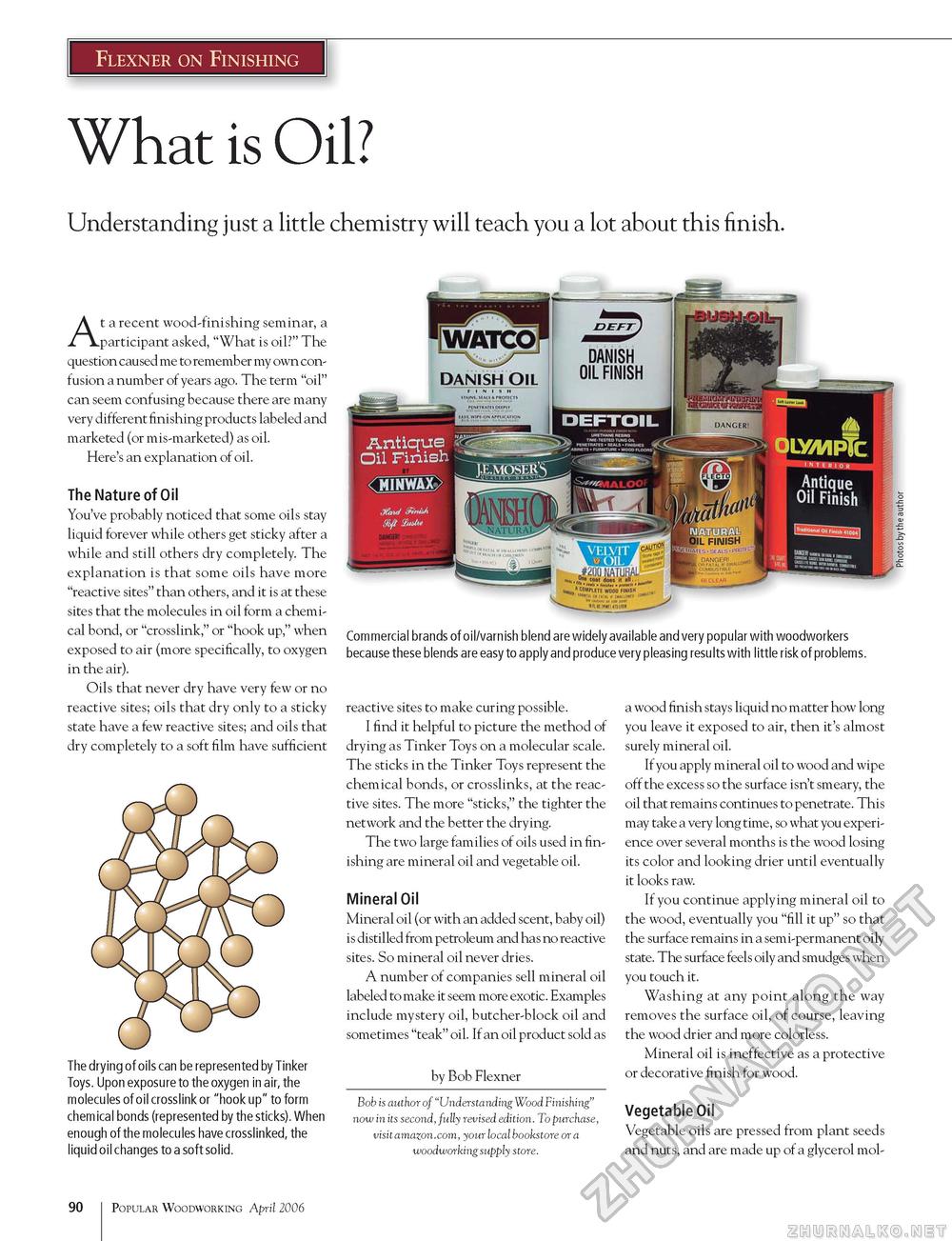Popular Woodworking 2006-04 № 154, страница 93
Flexner on Finishing What is Oil? Understanding just a little chemistry will teach you a lot about this finish. Commercial brands of oil/varnish blend are widely available and very popular with woodworkers because these blends are easy to apply and produce very pleasing results with little risk of problems. At a recent wood-finishing seminar, a participant asked, "What is oil?" The question caused me to remember my own confusion a number of years ago. The term "oil" can seem confusing because there are many very different finishing products labeled and marketed (or mis-marketed) as oil. Here's an explanation of oil. The Nature of Oil You've probably noticed that some oils stay liquid forever while others get sticky after a while and still others dry completely. The explanation is that some oils have more "reactive sites" than others, and it is at these sites that the molecules in oil form a chemical bond, or "crosslink," or "hook up," when exposed to air (more specifically, to oxygen in the air). Oils that never dry have very few or no reactive sites; oils that dry only to a sticky state have a few reactive sites; and oils that dry completely to a soft film have sufficient The drying of oils can be represented by Tinker Toys. Upon exposure to the oxygen in air, the molecules of oil crosslink or "hook up" to form chem ical bonds (represented by the sticks). When enough of the molecules have crosslinked, the liquid oil changes to a soft solid. reactive sites to make curing possible. I find it helpful to picture the method of drying as Tinker Toys on a molecular scale. The sticks in the Tinker Toys represent the chemical bonds, or crosslinks, at the reactive sites. The more "sticks," the tighter the network and the better the drying. The two large families of oils used in finishing are mineral oil and vegetable oil. Mineral Oil Mineral oil (or with an added scent, baby oil) is distilled from petroleum and has no reactive sites. So mineral oil never dries. A number of companies sell mineral oil labeled to make it seem more exotic. Examples include mystery oil, butcher-block oil and sometimes "teak" oil. If an oil product sold as by Bob Flexner Bob is author of "Understanding Wood Finishing" now in its second, fully revised edition. To purchase, visit amazon.com, your local bookstore or a woodworking supply store. a wood finish stays liquid no matter how long you leave it exposed to air, then it's almost surely mineral oil. If you apply mineral oil to wood and wipe off the excess so the surface isn't smeary, the oil that remains continues to penetrate. This may take a very long time, so what you experience over several months is the wood losing its color and looking drier until eventually it looks raw. If you continue applying mineral oil to the wood, eventually you "fill it up" so that the surface remains in a semi-permanent oily state. The surface feels oily and smudges when you touch it. Washing at any point along the way removes the surface oil, of course, leaving the wood drier and more colorless. Mineral oil is ineffective as a protective or decorative finish for wood. Vegetable Oil Vegetable oils are pressed from plant seeds and nuts, and are made up of a glycerol mol- 90 Popular Woodworking April 2006 |








